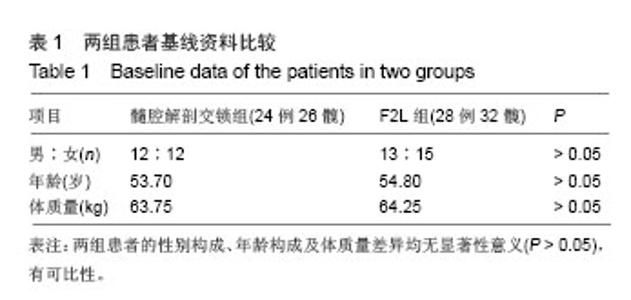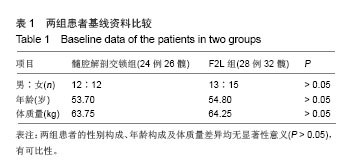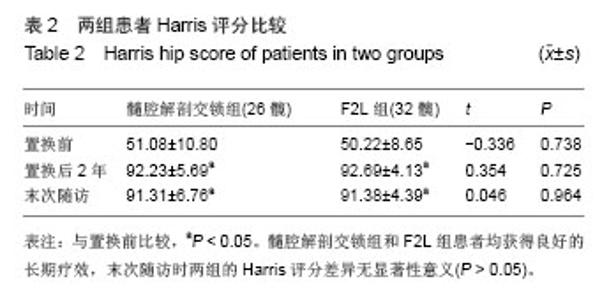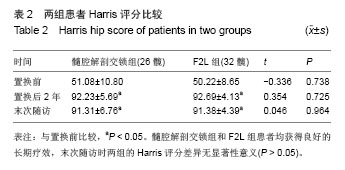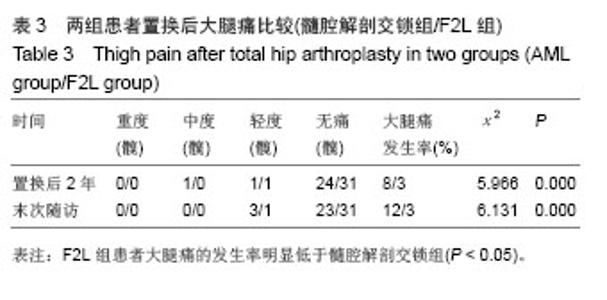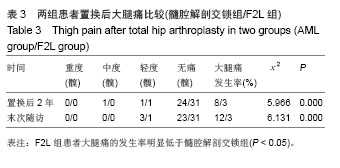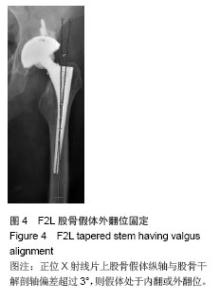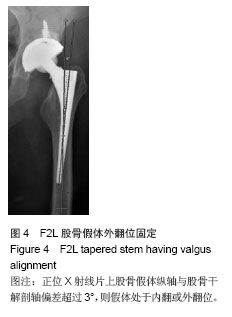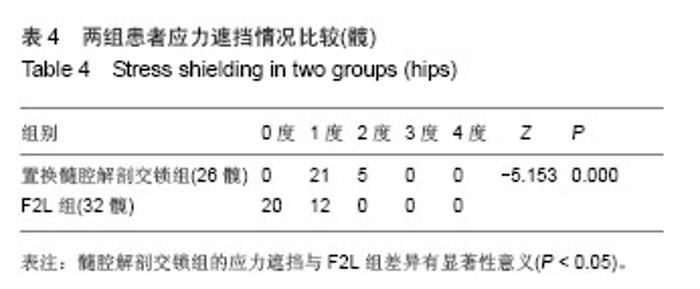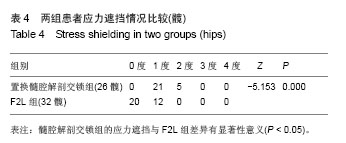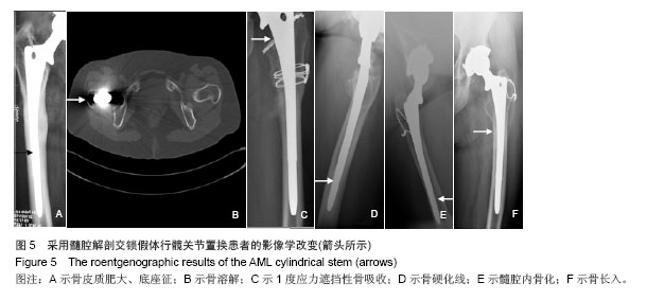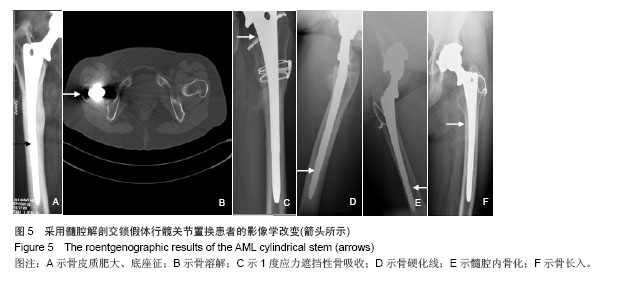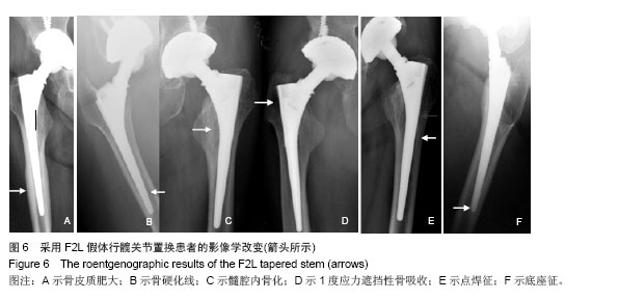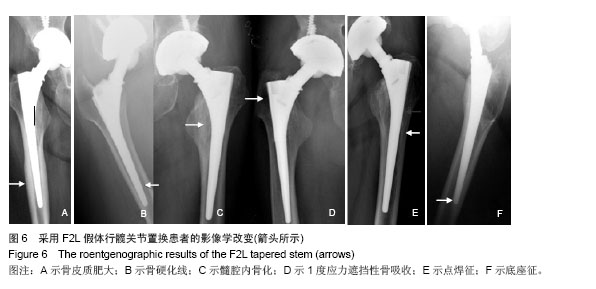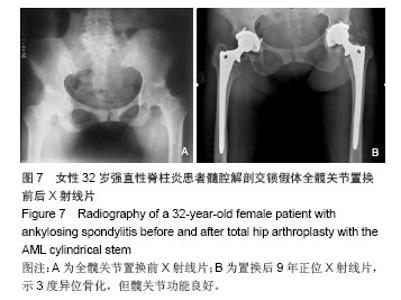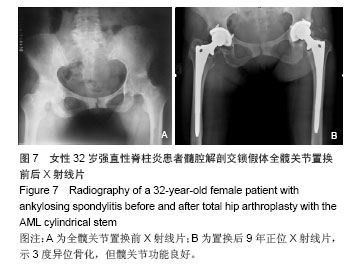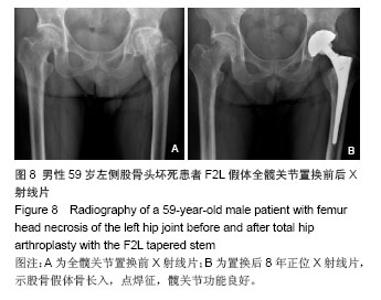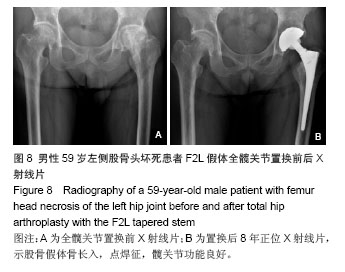| [1]Kaya M,Nagoya S,Sasaki M,et al.Primary total hip arthroplasty with Asian-type AML total hip prosthesis: follow-up for more than 10 years. J Orthop Sci. 2008;13:324-327.
[2]Chen CJ, Xenos JS, McAuley JP,et al.Second-generation Porous-coated Cementless Total Hip Arthroplasties Have High Survival. Clin Orthop Relat Res. 2006;451:121-127.
[3]Parvizi J, Keisu KS, Hozack WJ, et al. Primary total hip arthroplasty with an uncemented femoral component: a long-term study of the Taperloc stem. J Arthroplasty. 2004;19(2): 151-156.
[4]周一新.骨科标准新突破手术技术指导规范-《人工髋、膝关节置换术》解读[J].中国卫生标准管理,2011,2(4):72-74.
[5]Mulliken BD,Bourne RB,Rorabeck CH,et al. A Tapered Titanium Femoral Stem Inserted without Cement in a Total Hip Arthroplasty: Radiographic Evaluation and Stability. J Bone Joint Surg(Am). 1996;78:1214-1225.
[6]Chiu KY, FHKAM (Ortho Surg), Tang WM, et al.Cementless Total Hip Arthroplasty in Young Chinese Patients: A Comparison of 2 Different Prostheses. J Arthroplasty. 2001; 16:863.
[7]孙俊英,郝跃峰,杨沛彦,等. 采用羟基磷灰石涂层股骨柄假体行全髋置换术的早期疗效[J].中华创伤骨科杂志,2006, 8(1):27-30.
[8]Engh CA,Bobyn JD,Glassman AH.Porous-coated hip replacement the factors governing bong ingrowth, stress shielding, and clinical results.J Bone Joint Surg(Br).1987;69:45-55.
[9]李晓华,周维江,吴海山,等.非骨水泥全髋关节置换与大腿痛[J]. 中国矫形外科杂志,2001,8(8):820-821.
[10]Huiskes R, Weinans H, van Rietbergen B.The relationship between stress shielding and bone resorption around total hip stems and the effects of flexible materials. Clin Orthop Relat Res. 1992;(274):124-134.
[11]Dodge BM, Fitzrandolph R, Collins DN. Noncemented porous-coated anatomic total hip arthroplasty. Clin Orthop Relat Res. 1991;(269):16-24.
[12]Bourne RB,Rorabeck CH,Inman KJ,et al.Cementless total hip replacement: anatomic, cylindrical or tapered //the 67 th annual meeting of the American Academy of Orthopaetic Surgeons. Orlando, 2000.
[13]Burkart BC, Bourne RB, Rorabeck CH, et al. Thigh pain in cementless total hip arthroplasty. A comparison of two systems at 2 years' follow-up. Orthop Clin North Am. 1993; 24(4):645-653.
[14]Moreland JR, Bernstein ML. Femoral revision hip arthroplasty with uncemented porous-coated stems .Clin Orthop. 1995; (319):141-150.
[15]Moreland JR,Moreno MA.Cementless femoral revision arthroplasty of the hip: minimum 5 years follow up. Clin Orthop. 2001;(393):194-201.
[16]Cook SD,Thomas K, Dalton JE, et al.Hydroxyapatite coating of porous implants improves bone ingrowth and interface attachment strength.J Biomed Mater Res. 1992;26:989-1001.
[17]Geesink RG. Osteoconductive coatings for total joint arthroplasty.Clin Orthop. 2002;(395):53-65.
[18]Hacking SA,Tanzer M,Harvey EJ,et al. Relative contributions of chemistry and topography to the osseointegration of hydroxyapatite coatings.Clin Orhtop. 2002;(405):24-38.
[19]Capello WN, D'Antonio JA, Jaffe WL,et al.Hydroxyapatite coated femoral components:15-year minimum follow up.Clin Orthop.2006;(453):75-80.
[20]Bierbaum BE,Zeegen EN,Dayton MR.Hydroxyapatite coating on the femoral stem in primary total hip arthroplasty. Orthopedics. 2003;26:913-914.
[21]Piston RW, Engh CA, de Carvalho PI, et al. Osteonecrosis of the femoral head treated with total hip arthroplasty without cement. J Bone Joint Surg Am.1994;76:202.
[22]Kronick JL,Barba ML,Paprosky WG. Extensively coated femoral components in young patients. Clin Orthop.1997; 344:263.
[23]Kang JS, Moon KH, Park SR, et al. Long-Term Results of Total Hip Arthroplasty with an Extensively Porous Coated Stem in Patients Younger than 45 Years Old. Yonsei Med J. 2010;51(1):100-103.
[24]Karachalios T,Tsatsaronis C, Efraimis G, et al. The long-term clinical relevance of calcar atrophy caused by stress shielding in total hip arthroplasty: a 10-year, prospective, randomized study. J Arthroplasty. 2004;19(4):469-475.
[25]Goldberg VM. Anatomic cementless total hip replacement: design considerations and early clinical experience. Acta Orthop Belg. 1993;59 Suppl 1:183-189.
[26]Rosenberg A. Cementless total hip arthroplasty: femoral remodeling and clinical experience. Orthopedics. 1989;12(9): 1223-1233.
[27]Jones CP,Kelley SS. Sementless fiaction of the femoral stem. Curr Opin Orthop. 2001;12:52-56.
[28]刘延青,刘岩,张克.非骨水泥近端固定股骨柄和远端固定股骨柄中期随访时骨丢失的X线片表现[J].中国修复重建外科杂志, 2007,21(8):805-808.
[29]张超,戴越戎,汤亭亭,等.红霉素抑制磨损颗粒诱发体内骨溶解的研究[J].中国矫形外科杂志,2007,15(14):1100-1103.
[30]程涛,戴闽,韦金忠,等.无菌性松动全髋关节假体周围界膜组织中Caspase-3 表达和细胞凋亡的研究[J].中国修复重建外科杂志, 2007,21(8):810-813.
[31]Murray PJ, Hwang KL, Imrie SN, et al. Polyethylene Wear and Osteolysis Is Associated With High Revision Rate of a Small Sized Porous Coated THA in Patients With Hip Dysplasia. J Arthroplasty. 2014;29:1373-1377.
[32]Engh CA Jr, Stepniewski AS, Ginn SD, et al. A randomized prospective evaluation of outcomes after total hip arthroplasty using cross-linked Marathon and non-cross-linked Enduron polyethylene liners. J Arthroplasty. 2006;21:17-25.
[33]Leung SB, Egawa H, Stepniewski AS, et al.Incidence and volume of pelvic osteolysis at early follow-up with high cross-linked and noncross-linked polyethylene. J Arthroplasty. 2007;22:134-139. |
